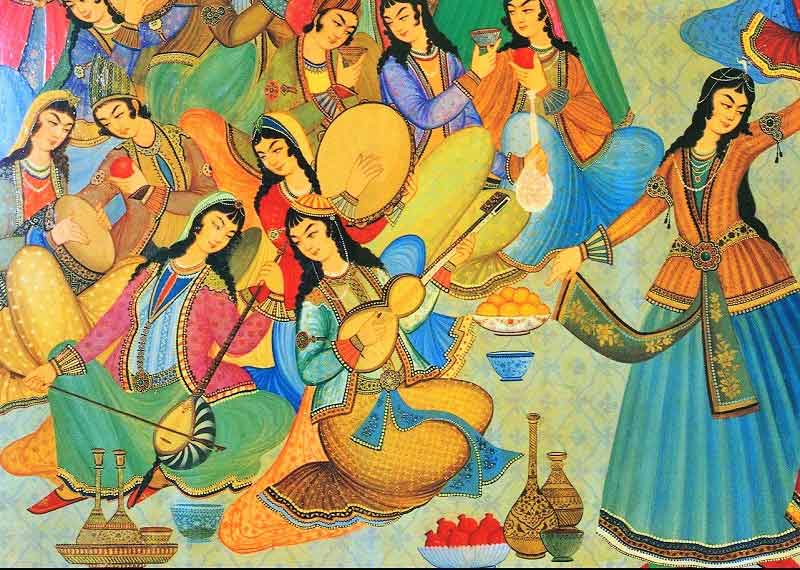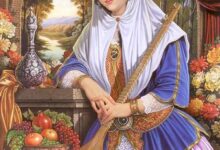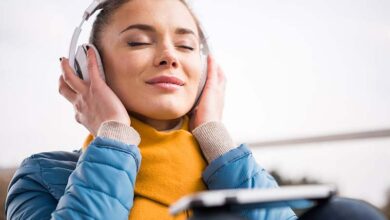Iranian Traditional Music

A desert that is left in the furnace and its only fence is the few peaks that protect it, listen, can you hear its sound?
Come a little closer. Oh, have you heard now ?! This shepherd’s reed song is the only one left in our desert. A song that is not for the herd. That herd is an excuse for a shepherd to say how sad his heart is. The shepherd blows and the straw comes to life. The throne trembles and our hearts become enchanted. Yes, this is a miracle that a person has been familiar with for many years.
Did he think that the day he played the shepherd would become part of history? A history that is ours yesterday and we will join it one day. A history that is part of a tradition that is a tradition. The beauty of tradition is as old as it is. Just like the shepherd’s straw, the slower it was, the more pleasant it was.
So we have to write, from tradition, from the fusion of tradition and music. From the existence of tradition in music and why we are preoccupied with the spirit of these two words. The reason is the strange feeling we have about this issue.
Music flows in the particles of the universe. Sometimes it passes us so quietly that we do not feel its presence. In us and in our school, the most rhythmic song of the universe is repeated every day and every night. And we never understand it. A song that reminds us that we are alive and what our lives are worth. A song that reminds us how much we need the voice of our precious heart.
Music is an art that has long existed in all human societies. In a way, we can say that since the formation of humanity, it has considered itself in need of music. Early humans combined their basic needs with rhythmic songs. Hunting, rituals, and everything that has existed from the beginning have been somehow related to music, so it can be concluded that music has long been inextricably linked with tradition.
Iran, the country of history, myth, religion and tradition, the country of palaces left and gone, in each of which a world once flowed.
Because today we breathe in it and we do not realize it at all. A country that was once the heart of history. And today it has become so common that we ourselves have forgotten how long these paving stones under our feet will last. Javid Iran, which has been the cradle of art. As they have said: art belongs to Iranians and that’s it. Music in Iran is several thousand years old, so much so that we can consider music as part of the Iranian tradition. An Iranian whose wars and trumpets are familiar. He does not forget his feasts. Because its kings have given life to thin wires.
History of Iranian traditional music
Dry wood and dry wire and dry skin
Where is the voice of the friend of “Rumi” from?
Music in Iran, for very historical reasons, has gone beyond ancient times and beyond the present borders of Iran and has many demands. It is important to know that many of the borders that were part of the lands of Iran in ancient times and were considered scientific and cultural centers in Iran, today are independent lands.
In ancient Iran, various artistic disciplines were not referred to as “art”. And the artist was called a “craftsman.” In Iranian thought, any profession that was done to perfection was referred to as “art” and to someone who had a special skill and expertise in a profession, “art”, so that in Dari Persian, it was referred to as “musician” in the practical stage of “Rameshgar”. And was referred to in the stage of wise theory; Not an artist.
The word “art” has Avestan roots meaning “good ability”. Dr. Henry George, a renowned English orientalist researcher, has said: “Barbat, which is found in Iranian instruments, has been popular. The Chinese word is barbet, which is known in Italy as “Badistos”.
Iranian music is historically divided into three groups:
1- Asbestan
2- After Islam (from the beginning of the ninth century AH)
3- From the Safavid period until now
The music of ancient times is not known to our ancestors until the Sassanid dynasty.
Pre-Medieval music (Pishdadian and Kianian):
To get information about music at this time, we must refer to the historical hyacinths.
The national and historical epic of Iran “Shahnameh” is considered as a document for the mythological history of Iran. In Shahnameh, it is stated that music in mythological times in banquets, celebrations, mourning, feasts, mourning ceremonies, determination ceremonies, battles and religious rites; It has played a prominent role in epics and battle scenes and has been an important factor in creating excitement for warriors.
In Shahnameh, one of the oldest instruments was “karnai”. This instrument was used in wars to weaken the enemy’s morale. Which has an ear-scratching and frightening sound. For this reason, many of them were tied to camels and elephants and blown at once. And they created panic in the enemy.
Post-Islamic music merged with Arabic terms and took on an Arabic color. Such as: sound, dimensions, puns, types, periods, sums, tones and…
In the beginning of Islam, Ghanaian music was considered, which originally meant singing. And the musician took Mughni or Mughn ninth meaning singer.
During the Safavid period, music suffered a great stagnation and lost its scientific aspect until, during the Qajar dynasty, Western terms entered Iranian music.
“Barbat, river or incense” stringed instrument of festive instruments that has been used in celebrations and banquets with Rameshgaran. Iranian barbet making is one of the wound string instruments that is common in the Middle East, including Iran and Arab countries.
The barbet is one of the oldest oriental instruments. Contrary to many beliefs, barbat is considered an Arabic instrument. Barbat was an old Iranian instrument that was taken to Arab countries after Islam and was renamed from barbat to oud meaning “wood”. According to Elamite carvings in the third and fourth millennia BC, Barbat originated in the south and southwest of Iran. This instrument can be seen in metal utensils and inscriptions left from the Sassanid era that depict musicians.
Barbad, Bamshad, Nakisa and Ramtin can be named among the barbarians of this period. After the Sassanids and following the domination of the Muslim caliphs, the scope of this instrument spread throughout the Islamic world from China to Andalusia. During the reign of Abd al-Rahman II over Andalusia and his invitation to an Iranian harpist named Kamal al-Din Zaryab, the instrument was imported to Spain. Zaryab Barbat develops and evolves in this land. And by mixing this instrument with string (another Iranian instrument) he makes the guitar. Every year in Spain, a celebration called Zaryab is held. Paco Delosia, one of the most famous guitarists in the world, has composed a piece called Zaryab in his memory.
Fereydoun is the symbol of the Aryan people who have three sons. Who divided the lands of the earth between three sons and in this division gave Iraj his best son the rule of Iran. And Iraj was envied by the brothers and killed by them. Manouchehr took revenge on Iraj from his brothers, and at the same time, the 29th Barbad tune called Kane Iraj was created. Which was played until the Mongol domination.
In the past, music was so important that in large mourning ceremonies, musical instruments were adorned with black cloth.
The legendary story of Kikavus during the reign of King Kiani who ruled for one hundred and fifty years. And the deep influence that music (song of Mazandaran army of that time) created in him, which led to the conquest of Mazandaran. This story shows the amazing effect of Angizmusic music on humans.
Indeed, music is one of our national arts and like other arts, it is a mirror of the life and history of our country. Music is the oldest art.
Music first had a magical aspect in human life and then had a certain religious function. And various religions have given it a heavenly aspect. For many believers, singing is considered one of the miracles of “David the Prophet”. Behjat al-Ruh’s book has attributed the seven instruments of Iranian music to each of the seven prophets:
1- Right from Adam 2- Lovers from Musa 3- Iraq from Yusuf 4- Vachek from Younes 5- Hosseini from Davood
6- Varuzal Arab and Hosseini from Ibrahim 7- Rohawi from Ismail
Allameh Shahid Morteza Motahhari in his book “Introduction to Islamic Sciences” has included music in a general framework among Islamic sciences.
The hearing of the dervishes, which is still famous, has been used as a means of training the seeker in the path of God. And still, after many years, one can still hear the songs of Sama and Daf beyond Rumi’s poems.
Music is created by people and composed by composers. According to Abolhassan Saba: Iranian music is local music.
The music of each country has its own cultural and nature characteristics that can be developed and harmonized with the conditions of time, place, space, nature, genetics and emotional tendencies of those people. Music is one of the few arts that originated from the human being and its effect on the body can be examined.
The relationship of music with different vaginas, states and times:
This goes back to the ancient Greek theory that they considered the fourfold of their music, or the four farajs (Safradi, Demoi, Phlegm, and Surai) to be in harmony. One of the special features of Iranian music is the periodic rotation around color (tetrachords) and various intervals. Each long consists of four notes and three physical intervals. The main mode of each long is related to its two important distances, namely the second and third dong. By changing it, the feeling also changes.
The combination of longs also creates a variety of states, each of which is based on other modes and can be associated with four vulvae. On the other hand, these four states are in harmony with the four atmospheric and temporal states. Which creates a relatively clear and unified pattern. Connect with four groups of months of the year. Understanding the limitations of Iranian music as a genuine traditional art like other arts, although in harmony with our culture and habits, but the sound needs and aesthetic perceptions of Haransan music are beyond limited.
The row of Iranian music with about 300 beautiful and pleasant corners is the source and source of inspiration, initiative and imagination of musicians. From two or three centuries ago, the music authorities of the past were arranged by innovators in coherent collections and new forms, and new patterns were added to it, so that the current line of Iranian music has been formed.
The first book in which the division of seven devices is recorded is the book of Majoor al-Khan Forsat Shirazi (d. 1299 AH). Which was written a hundred years ago. At present, the Iranian music series is divided into seven instruments: Mahour, Shoor, Homayoun, Chahargah, Sehgah, Panjgah and Nova, and five songs by Abu Atta, Afshari, Bayat Turki, Dashti and Isfahan. The four songs of Abu Atta, Afshari Bayat Turki and Dashti are branches of the Shoor system and the Isfahan song is a branch of the Homayoun system.
Each device or sub-device (song) has approximately 10 to 30 corners. And each corner has a general concept and design and a part of the capacity and capability of the song device. These were a brief overview of the state of Iranian music.
Music is a natural part of sound and is one of the first human needs. Plato considers music necessary for human development and believes that this art increases the accuracy, intelligence, observation and inference and human emotions and says: Leave the hardest body and the most impenetrable soul to me to force Music and sports, I remove the ring of turbidity from inside him and turn him into a vigilant and warrior man.
And most believe: where the words remain, the music begins. Music is the embodiment of emotions. The musician closes the curtain with human nature (this sentence has been attributed to Hassan to the judge and some to the Baha’is and the plural to Debussy).
“Music leads man to the knowledge of God,” says Alfred Demuse. And leads man to travel in a world unknown to him.
Nietzsche says: The world laughs when it is governed by the law of music. Music makes every other person very different from the normal body. And in this secondary body, the vocal emotions of rhythmic emotions and thought are full of melody.
For the first man, music and what is weight and sound are considered to represent the heavenly and transcendental powers, so for all tribes, the initial manifestations of music in religious celebrations and witchcraft. And they did not know of any more eloquent means of interpreting what was beyond human comprehension. So music is the first means of expressing human instinctual needs.
Man expresses his feelings and influences through study or through action and behavior. For this reason, the three principles of music, poetry and dance, which express moods by song or word or movements and movements; Together and in fact all three factors, the child is a single mother, which is education. And perhaps this is why Aristotle considers dance to be a fine art and believes that poetry and dance are two branches of a single root. Music is the greatest manifestation of human endeavor to immortalize human life. The lovely songs of the music represent the fleeting life, and the vibrancy of its soulful melodies is a diagram of the continuity of the consecutive minutes of time.
* Sources and references are available in the editorial office of Artmag.








